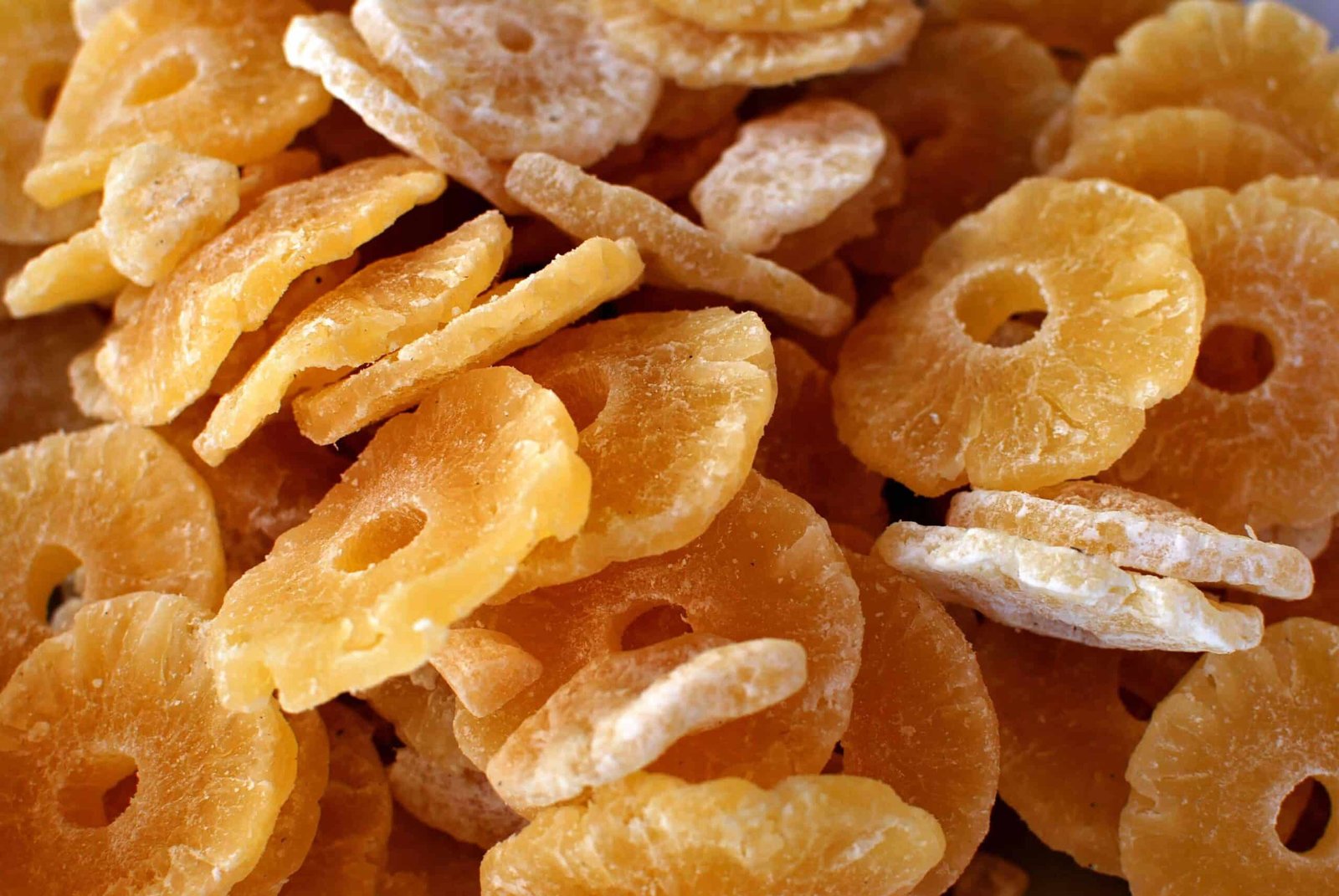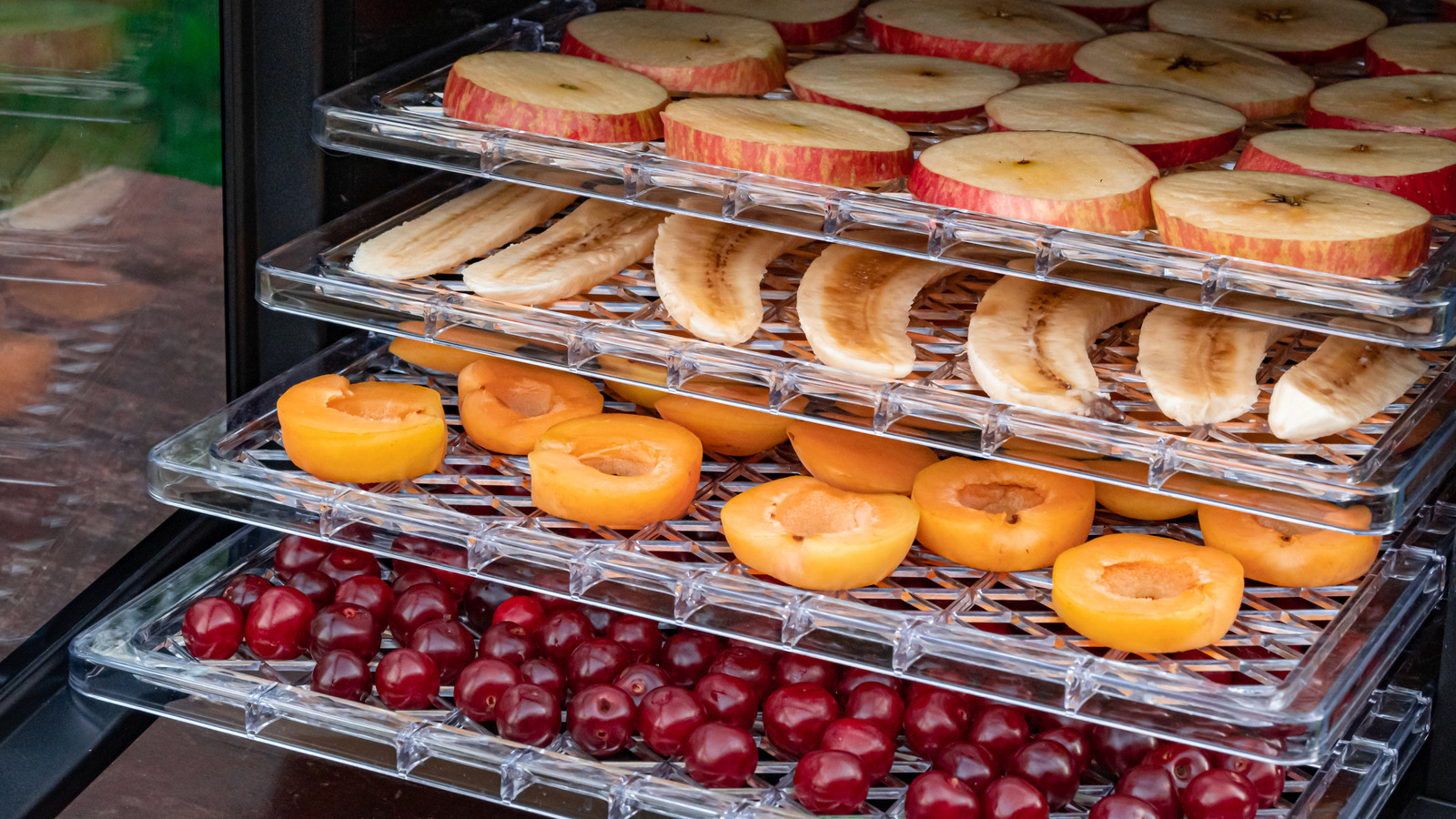Embark on a culinary adventure with food dehydrator recipes, where the art of preserving food takes center stage. Dive into the secrets of dehydration, unlocking a world of flavors and extending the shelf life of your favorite ingredients.
From succulent fruits and crisp vegetables to tender meats and delectable snacks, this guide empowers you to harness the versatility of your food dehydrator, transforming ordinary ingredients into extraordinary culinary creations.
Food Dehydrator Basics: Food Dehydrator Recipes

Food dehydration is a method of preserving food by removing moisture, inhibiting the growth of bacteria and mold. This process concentrates the flavors and nutrients of food, making it a healthy and convenient way to store and consume food.
Food dehydrators are kitchen appliances that circulate warm air around food to remove moisture. They come in various sizes and capacities, and some models offer additional features such as adjustable temperature settings and timers.
Choosing the Right Food Dehydrator
When choosing a food dehydrator, consider the following factors:
- Capacity:Determine the amount of food you plan to dehydrate regularly. A larger capacity dehydrator will accommodate more food, but it will also be more expensive.
- Temperature Settings:Some dehydrators offer adjustable temperature settings, which is useful for dehydrating different types of food. For example, fruits and vegetables require lower temperatures than meat and fish.
- Timer:A timer allows you to set the dehydrator to run for a specific amount of time, which is convenient for unattended dehydration.
- Warranty:Choose a dehydrator with a good warranty to protect your investment.
Types of Foods Suitable for Dehydration

Dehydration is an excellent way to preserve the flavor and nutritional value of a wide variety of foods. Many types of foods are suitable for dehydration, including fruits, vegetables, herbs, and meats.
The following table provides a list of food categories and examples of foods within each category that are suitable for dehydration, along with their recommended dehydration times and temperatures:
| Food Category | Examples | Dehydration Time | Dehydration Temperature |
|---|---|---|---|
| Fruits | Apples, bananas, berries, citrus fruits, grapes, mangoes, peaches, pears, pineapples | 4-12 hours | 125-145°F (52-63°C) |
| Vegetables | Asparagus, beets, broccoli, carrots, celery, corn, green beans, onions, peppers, potatoes, tomatoes | 6-12 hours | 115-135°F (46-57°C) |
| Herbs | Basil, cilantro, dill, oregano, parsley, rosemary, thyme | 2-4 hours | 95-115°F (35-46°C) |
| Meats | Beef, chicken, fish, pork, turkey | 6-12 hours | 145-165°F (63-74°C) |
Dehydration Techniques
Dehydration techniques are methods used to remove moisture from food, preserving it for extended periods. This process inhibits microbial growth, extending the shelf life of food products.
Various dehydration techniques exist, each with its advantages and disadvantages. The choice of technique depends on factors such as the type of food, the desired level of dryness, and the availability of equipment.
Air Drying
- Air drying is a simple and traditional method that involves exposing food to circulating air at ambient temperature.
- It is suitable for small quantities of food with a high surface area-to-volume ratio, such as herbs, spices, and thinly sliced fruits.
- Air drying requires good ventilation and protection from insects and dust.
Sun Drying
- Sun drying is another traditional method that utilizes the sun’s heat and ultraviolet radiation to evaporate moisture from food.
- It is suitable for large quantities of food, such as fruits, vegetables, and fish.
- Sun drying requires a warm, dry climate and protection from insects and animals.
Oven Drying
- Oven drying involves using a conventional oven to remove moisture from food.
- It is suitable for small quantities of food that require precise temperature control.
- Oven drying is not as efficient as dedicated food dehydrators and may result in uneven drying.
Food Dehydrator
- A food dehydrator is a specialized appliance designed to remove moisture from food efficiently.
- It consists of a heating element, a fan, and multiple trays for holding food.
- Food dehydrators provide precise temperature control and even airflow, ensuring consistent dehydration.
When using a food dehydrator, it is important to follow the manufacturer’s instructions carefully.
- Set the temperature according to the type of food being dehydrated.
- Set the timer for the appropriate amount of time, depending on the food’s moisture content and desired dryness.
- Monitor the food regularly during dehydration to ensure it is drying evenly and not over-drying.
Storage and Rehydration
Proper storage is crucial for preserving the quality and longevity of dehydrated foods. Store dehydrated foods in airtight containers, such as glass jars or Mylar bags, to prevent moisture and oxygen exposure. These containers should be kept in a cool, dark, and dry place, away from heat and direct sunlight.
Rehydrating dehydrated foods is a simple process. Place the dehydrated food in a bowl or container and add hot water or other liquids, such as broth or milk, to cover. Allow the food to soak for the recommended time, usually 15-30 minutes, or until it has reached the desired consistency.
Shelf Life
The shelf life of dehydrated foods varies depending on the type of food, storage conditions, and packaging. Generally, dehydrated foods can last for several months to years when stored properly. Vacuum-sealed or oxygen-absorbing packaging can further extend the shelf life.
Recipes for Dehydrating Food
Dehydrating food is a great way to preserve it and extend its shelf life. Dehydrated foods are also lightweight and easy to store, making them ideal for camping, hiking, or other outdoor activities.
There are many different types of food that can be dehydrated, including fruits, vegetables, meats, and herbs. Each type of food has its own unique dehydration time and temperature.
Recipes
The following table provides recipes for dehydrating a variety of foods.
| Food Type | Ingredients | Preparation | Dehydration Time and Temperature |
|---|---|---|---|
| Apples | 6 cups peeled and sliced apples | Toss apples with 1/4 cup lemon juice to prevent browning. | 12-18 hours at 135°F (57°C) |
| Bananas | 3 ripe bananas | Peel and slice bananas. | 10-12 hours at 125°F (52°C) |
| Carrots | 3 cups peeled and sliced carrots | – | 8-10 hours at 135°F (57°C) |
| Chicken | 1 pound boneless, skinless chicken breasts | Cut chicken into 1-inch pieces. | 8-10 hours at 165°F (74°C) |
| Herbs | 1 cup fresh herbs (such as basil, oregano, or thyme) | Remove leaves from stems. | 4-6 hours at 100°F (38°C) |
Troubleshooting Common Issues

The dehydration process is generally straightforward, but there are occasional challenges. Here are some common issues and their potential solutions:
Uneven Drying
- Ensure proper air circulation by spacing food pieces evenly and not overcrowding the dehydrator.
- Rotate trays periodically to ensure even exposure to heat and airflow.
Food Not Drying Completely
- Increase dehydration time or temperature as needed.
- Check if the food is too thick or dense, requiring longer dehydration.
- Ensure the dehydrator is operating correctly and not malfunctioning.
Food Overheating
- Reduce dehydration temperature or time.
- Move the food to a cooler part of the dehydrator, if possible.
- Check the dehydrator’s thermostat to ensure it is functioning properly.
Mold or Spoilage
- Ensure the food is thoroughly washed and dried before dehydration.
- Dehydrate food at the correct temperature and time to prevent spoilage.
- Store dehydrated food properly in airtight containers to prevent moisture and contamination.
Advanced Dehydration Techniques
Advanced dehydration techniques offer greater control over the dehydration process, resulting in improved food quality and preservation. Two notable techniques are vacuum sealing and freeze drying.
Vacuum Sealing
Vacuum sealing removes air from a sealed container before dehydration, creating a low-oxygen environment that inhibits bacterial growth and preserves the food’s flavor and nutritional value. This technique is particularly suitable for fruits, vegetables, and meats that are prone to oxidation.
Freeze Drying, Food dehydrator recipes
Freeze drying involves freezing the food before subjecting it to a vacuum, causing the water in the food to sublime (convert directly from solid to gas) without melting. This process results in a lightweight, porous product with a long shelf life.
Freeze drying is commonly used for fruits, vegetables, and meats that require extended storage stability.
Dehydrated Food Products
Dehydrated food products have become increasingly popular due to their convenience and extended shelf life. These products undergo a process of removing moisture, resulting in a concentrated form that is lightweight and easy to store.
Commercially Available Dehydrated Food Products
- Fruits:Apples, bananas, mangoes, berries, etc.
- Vegetables:Carrots, celery, onions, tomatoes, etc.
- Meat:Beef jerky, bacon, sausage, etc.
- Fish:Salmon, tuna, cod, etc.
- Soups and Stews:Pre-packaged mixes that can be rehydrated with water.
Advantages of Dehydrated Food Products
- Extended Shelf Life:Dehydration significantly reduces moisture content, inhibiting microbial growth and extending the product’s shelf life.
- Convenience:Dehydrated foods are lightweight and easy to store, making them ideal for backpacking, camping, and emergency preparedness.
- Nutrient Retention:Proper dehydration techniques can preserve essential nutrients, vitamins, and minerals.
- Reduced Spoilage:The removal of moisture creates an unfavorable environment for spoilage, reducing the risk of foodborne illnesses.
Disadvantages of Dehydrated Food Products
- Loss of Freshness:Dehydration can alter the texture and flavor of foods, potentially compromising their freshness.
- Rehydration Required:Dehydrated foods require rehydration before consumption, which may involve additional time and effort.
- Higher Cost:Dehydrated food products are often more expensive than their fresh counterparts.
- Limited Variety:The selection of commercially available dehydrated foods may be limited compared to fresh options.
Q&A
What are the benefits of using a food dehydrator?
Dehydrators preserve food by removing moisture, extending shelf life, concentrating flavors, and enhancing nutritional value.
How do I choose the right food dehydrator?
Consider factors such as capacity, temperature range, airflow, and features like digital controls and timers.
What foods are suitable for dehydration?
Fruits, vegetables, meats, herbs, and even dairy products can be dehydrated, creating a variety of snacks, ingredients, and long-lasting meals.
